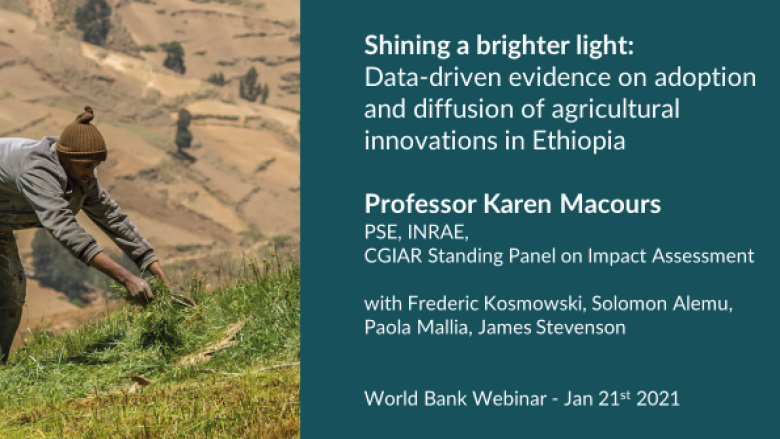How can we measure the impact of agricultural research and innovations in a world that is rapidly changing and facing climate-related challenges? The agricultural sector in Ethiopia has seen sustained expansion in recent decades, hand in-hand with economic growth and poverty reduction. The country has gradually become the hotspot of international agricultural research collaboration, with almost all of the centers of CGIAR being represented in Addis Ababa and working in partnership with the Ethiopian Institute for Agricultural Research.
A recent webinar on “Shining a brighter light: Data-driven evidence on adoption and diffusion of agriculture innovations in Ethiopia” organized by the CGIAR in coordination with The World Bank in January 2021, discussed these key issues. It illustrated the results of a new report that focuses on the success of agricultural innovations in the last 20 years in Ethiopia, which is the culmination of a joint effort to develop and pilot, a comprehensive, country-level framework, led by the Standing Panel on Impact Assessment (SPIA)* in partnership with the Ethiopian Central Statistics Agency (CSA), and the LSMS team.
During the webinar, the participants talked about the implications for the design and targeting of interventions aiming to enhance the adoption of agricultural changes. They identified 18 innovations that are potentially disseminated at scale and then integrated novel data collection approaches about them into the Ethiopian Socioeconomic Survey (ESS) in 2018/19. Furthermore, they showed that in aggregate, most novelties in the rural sector are adopted by smallholders, poor households, and young and female farmers.
Considering the diffusion of agricultural innovations one at a time, however, provides an incomplete picture, as different interventions reach particular households and regions. Examining farmers as critical consumers who can be offered a portfolio of possible changes to fit heterogeneous needs can surely help provide a better tracking of rural development projects.
The webinar also discussed what it takes to collect rich data on agricultural changes, as well as the importance of partnerships for better data and frontier topics on measurement that have broad applicability to monitor agricultural development projects.
Resources:
